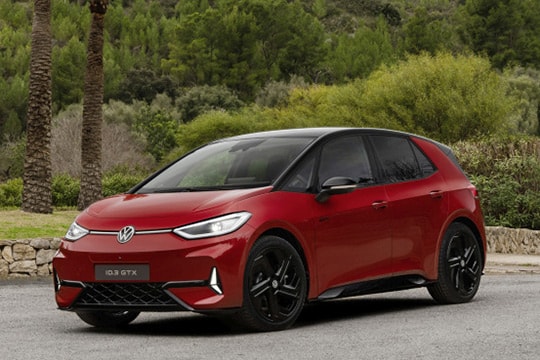VOLKSWAGEN ID.3 GTX Models/Series Timeline, Specifications & Photos
First production year: 2024
Body style: Hatchback
Volkswagen was praised for creating the ID.3, but then it was criticized by customers because the car lacked any sort of performance in terms of driver's excitement, but the automaker fought back with the GTX version of its electric hatchback.
The German automaker was known for creating the hot-hatch segment because it created the first successful sporty hatchback, the Golf GTI. Over the years, that nameplate became the synonym for affordable, adrenaline-produced teenagers' cars. When the EV revolution started, Volkswagen quickly introduced the ID.3. It was an affordable electron-powered hatchback that was good in cities and reasonable for long distances. While at first, customers were satisfied with what the car provided, later on, other automakers joined the EV bandwagon with better products, and the ID.3 started to slow down its sales rhythm. In 2024, Volkswagen fought back and introduced the GTX, which could be considered the GTI version of the ID.3. Even though it shared its overall shape with its less-potent brother, it was different in all areas: exterior, interior, and drivetrain.
Volkswagen's design department worked hard to create a sportier look for the GTX but without raising the costs too much. On the one hand, it featured the same LED headlights and an LED stripe for the daytime running lights spread over the front fascia. On the other hand, it had a new bumper that featured an A-shaped air intake adorned by a high-gloss black chicken-wire-style mesh on the lower side of the apron. A set of triangular scoops flanked it and housed an additional set of daytime running lights.
From its profile, the 2024 ID.3 GTX boasted its 20" light-alloy wheels that came fitted as standard, which were available either with a diamond cut light metallic finish or completely black. Furthermore, the front fenders sported the GTX badges finished in black, matching the color of the vehicle's side sills. Furthermore, the roof and the A-, B-, and C-pillars were also high-gloss black. At the back, the automaker installed a new set of taillights with a tridimensional design that sported C-shaped outer LED stripes. Volkswagen also introduced a new high-gloss black integrated into the lower side of the bumper.
Inside, the automaker offered customers a whole new cabin experience. The sports seats with integrated headrests at the front sported microfiber upholstery. Volkswagen also introduced a redesigned dashboard covered with cloth and man-made leather. In addition, atop the center stack, the automaker installed, as an option, a 12.9-inch touchscreen for the infotainment system that included ChatGPT. In the back, there were no significant differences for the passengers who sat there.
But the rear change happened under the car's skin. Volkswagen introduced a new 79 kWh battery pack. Thanks to a new battery management system, the vehicle's range was extended, reaching up to 600 km (373 miles) of range. Power came from either a 210 kW (281 hp) or 240 kW (322 hp) motor that drove the rear wheels only, depending on the version.
